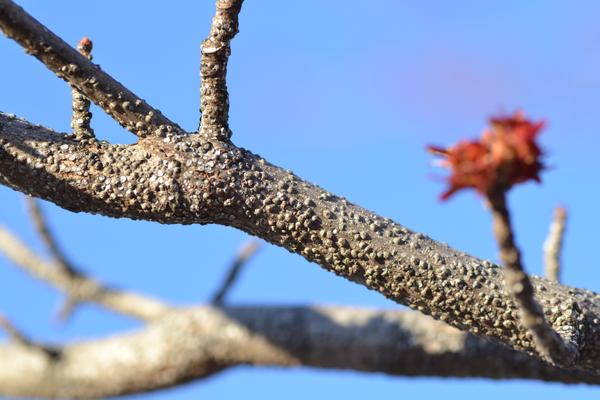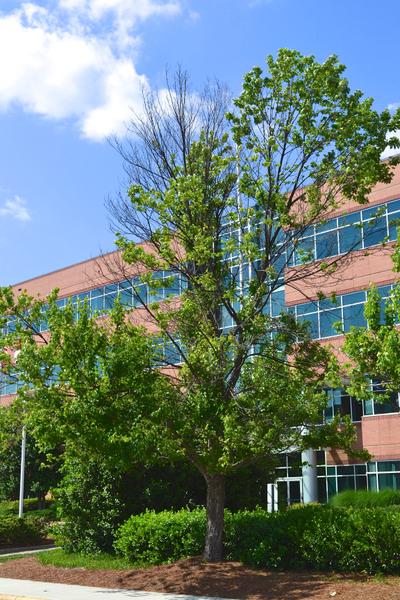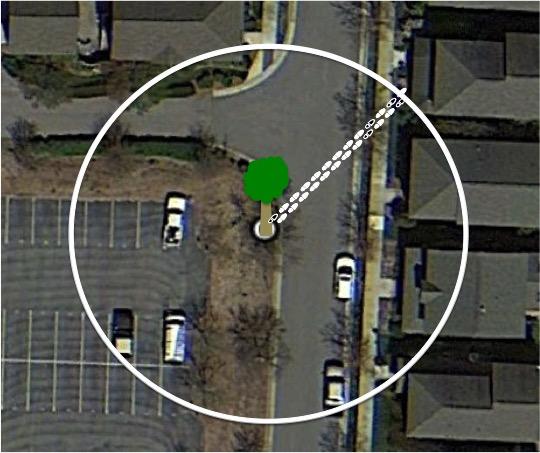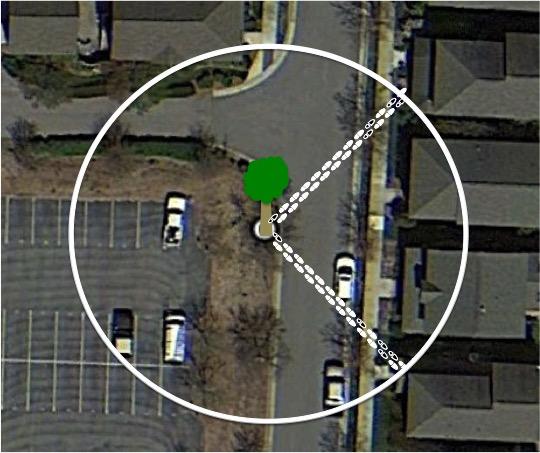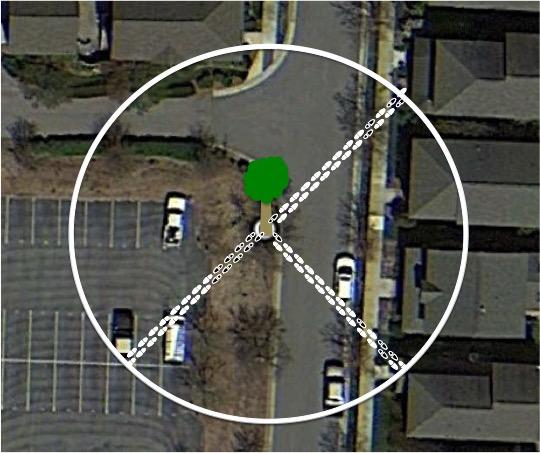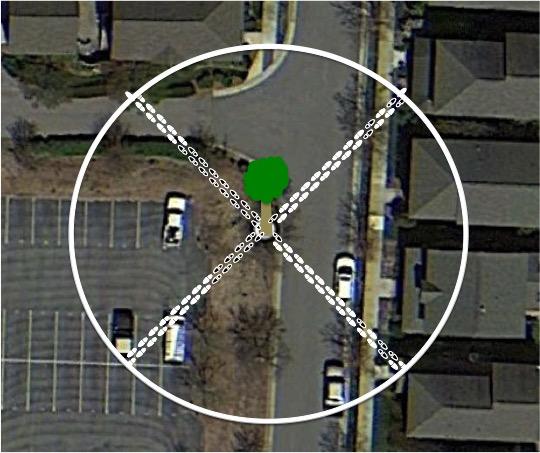Impervious Surface Planting Thresholds to Reduce Tree Stress and Scale Abundance
Red maples are among the most frequently planted urban trees. They are often infested with gloomy scales that reduce their growth and condition. Gloomy scale abundance increases and tree condition decreases when trees have more impervious surfaces around them. The impervious surface threshold can be used to identify planting sites where red maples will thrive.
Trees surrounded by < 33% impervious surface cover (at 25 m) will most likely be in good or excellent condition. Trees surrounded by 33% - 66% are likely to be in fair condition. Trees surrounded by 67% or more tend to be in poor condition. Landscape architects, urban planners, arborists, landscapers, and other tree care professionals can use these impervious surface thresholds to reduce red maple management and replacement costs.. Arborists rate tree condition as poor, fair, good, or excellent. Impervious surface cover can be measured from satellite images with software such as ArcGIS or by using the Pace to Plant technique described below.
The ‘Pace to Plant’ Technique for Measuring Impervious Surface Cover
Landscape designers and tree care professionals can use impervious surface thresholds to increase the likelihood red maples will survive and thrive after planting. Measuring impervious surface cover with computer software is practical for landscape designers and planners but may not be used by landscape and tree care professionals. The ‘Pace to Plant’ technique is a tool for landscape professionals to quickly and accurately quantify the amount of impervious surface surrounding a tree or planting site. Simply follow 5 steps to estimate the percentage of impervious surface area covering the ground around a planting site. Then apply the impervious surface threshold to determine if the site is appropriate for red maple.
Step 1
Stand at the planting site and identify the closest impervious surface edge. In this picture it is the curb right of the tree. Take 25 steps at 45° to the nearest impervious edge, counting the steps that land on impervious surface (white footsteps in figure).
Step 2
Turn 90° from the initial transect. Take 25 more steps counting the steps that fall onto impervious surface (white footsteps in figure). Watch for traffic and obstacles as you walk. If you encounter a building count the rest of the steps in that transect as impervious.
Step 3
Take 25 more steps, 90° to the previous transect, counting the steps that fall onto impervious surface (white footsteps in figure).
Step 4
Take 25 more steps, 90° to the previous transect, counting the steps that fall onto impervious surface (white steps in figure). This is the final transect and will complete an ‘X’ through the planting site and total 100 steps taken.
Step 5
The total number of steps that fall onto impervious surface equals the percentage of the surrounding ground area that is impervious to water. Use the impervious surface thresholds to determine if the site is appropriate for a red maple:
- 0-32% suitable planting site
- 33-62% consider other options
- 63-100% do not plant red maples.
In the example figure, 66/100 white footsteps landed on impervious surface, meaning that 66% of the area within the circle is impervious. This site is not suitable for a red maple.
References
Dale, AG, Youngsteadt, E and Frank, SD. 2016. Forecasting the effects of heat and pests on urban trees: Impervious surface thresholds and the ‘Pace to Plant’ technique. Arboriculture & Urban Forestry.
Publication date: May 10, 2016
N.C. Cooperative Extension prohibits discrimination and harassment regardless of age, color, disability, family and marital status, gender identity, national origin, political beliefs, race, religion, sex (including pregnancy), sexual orientation and veteran status.

